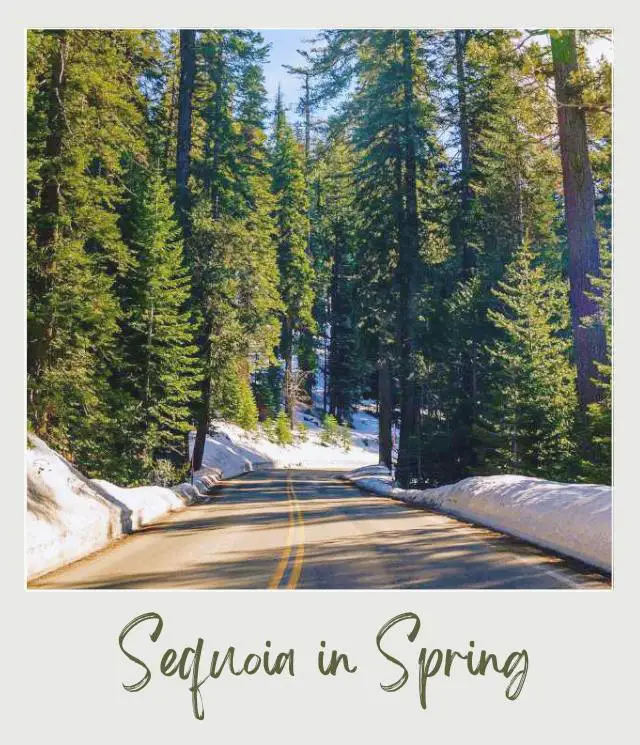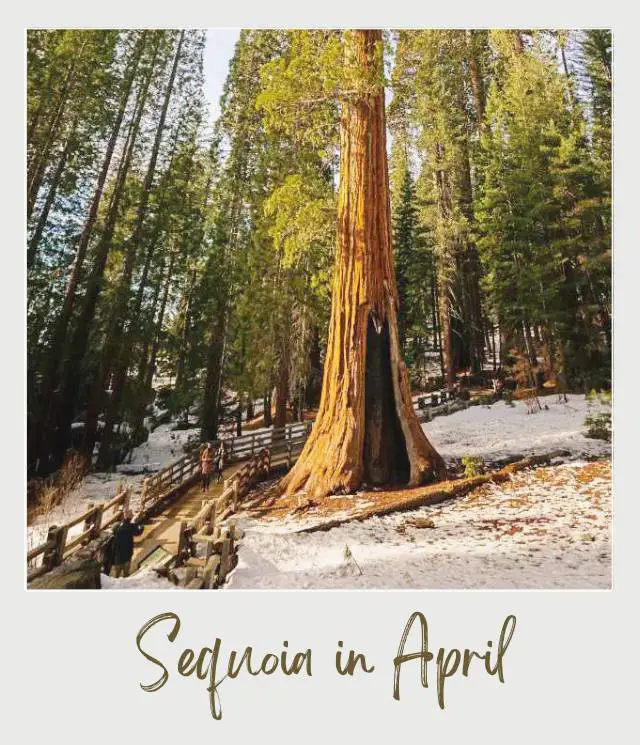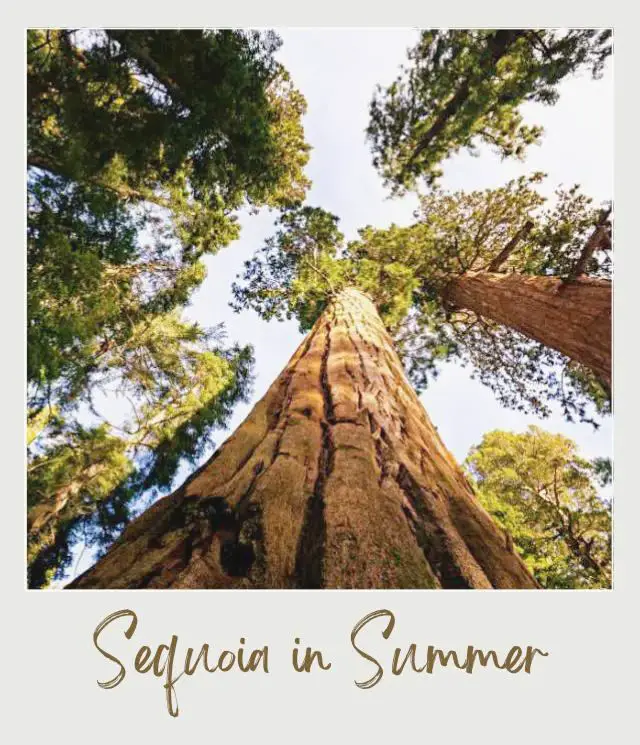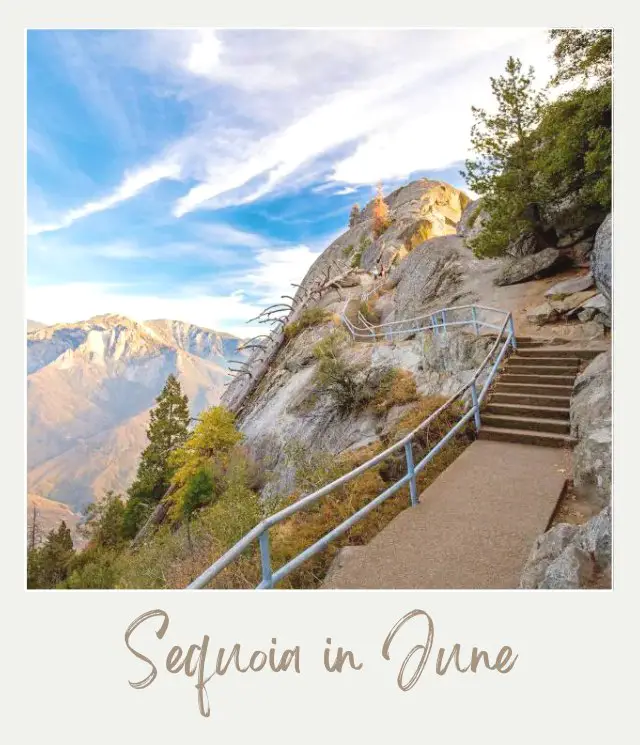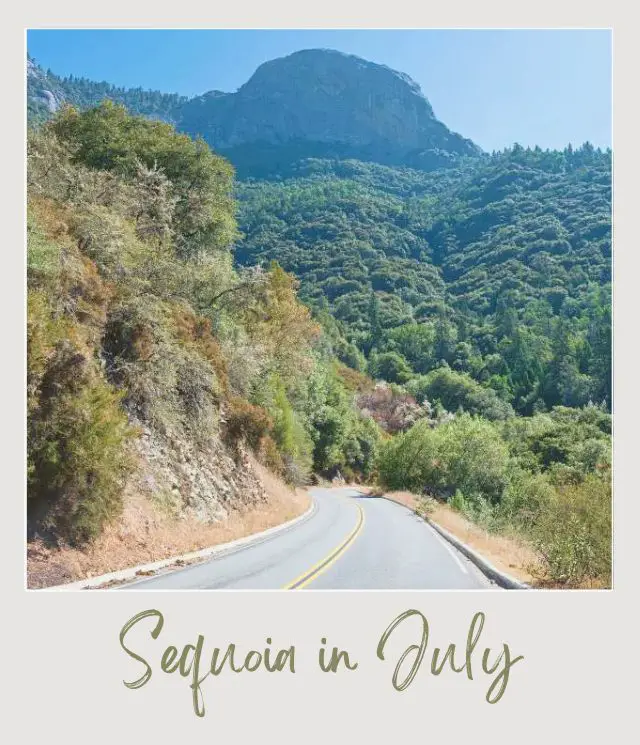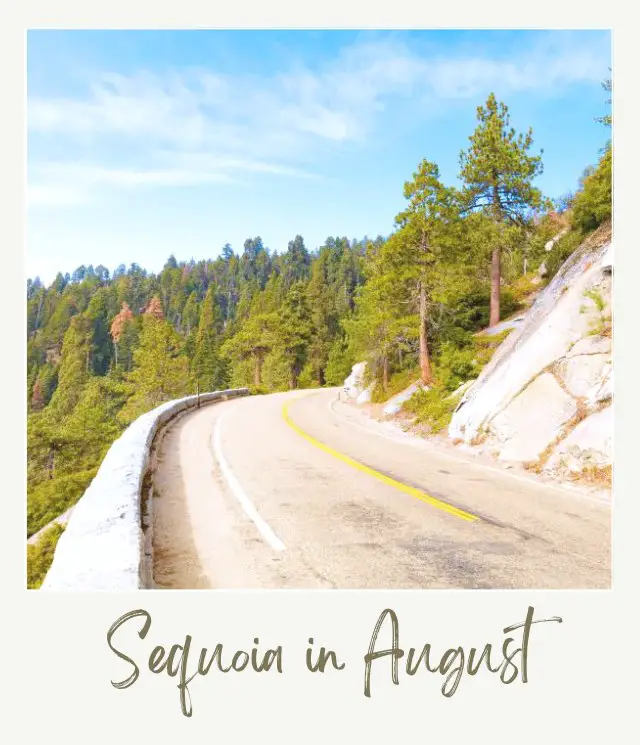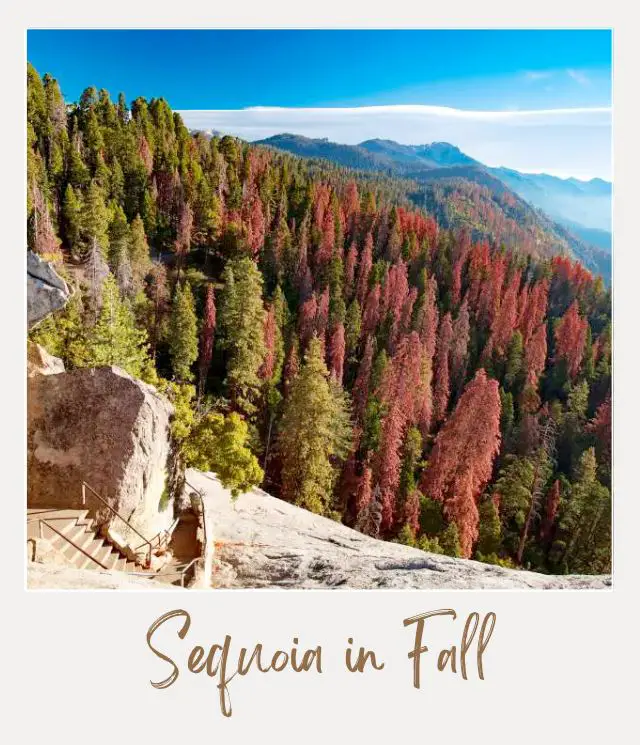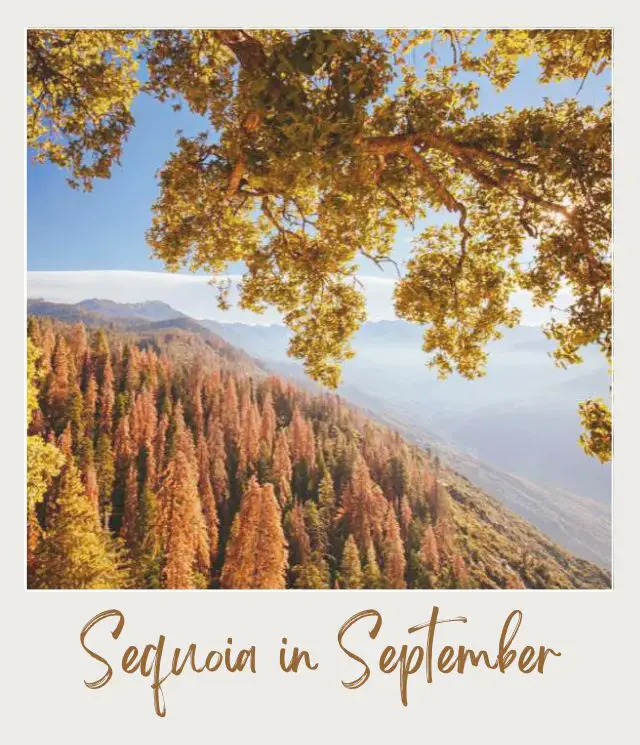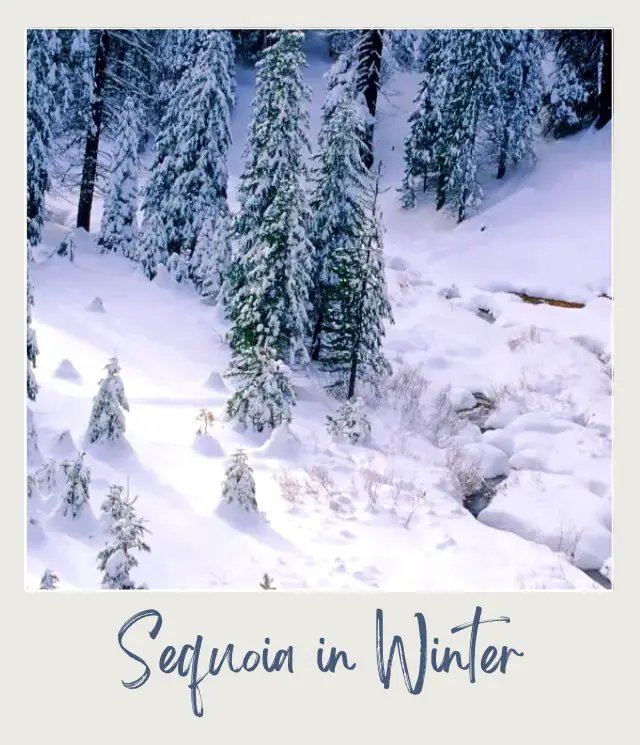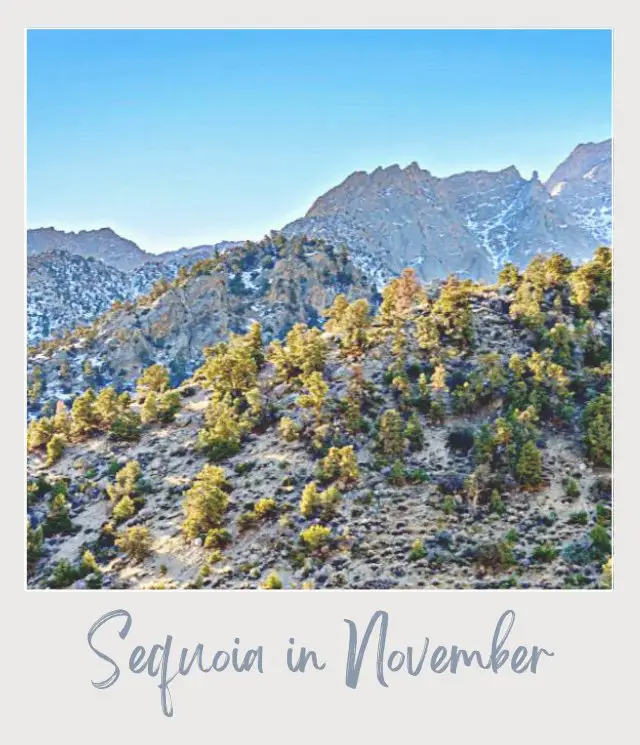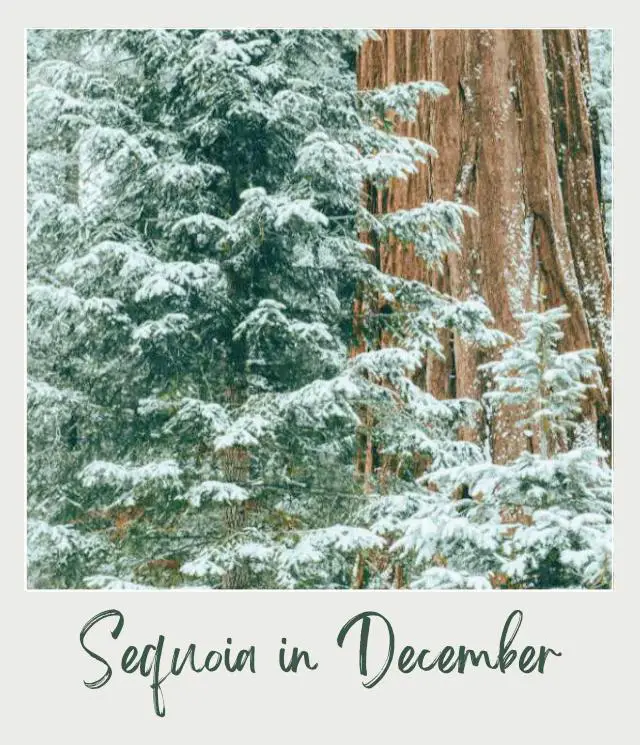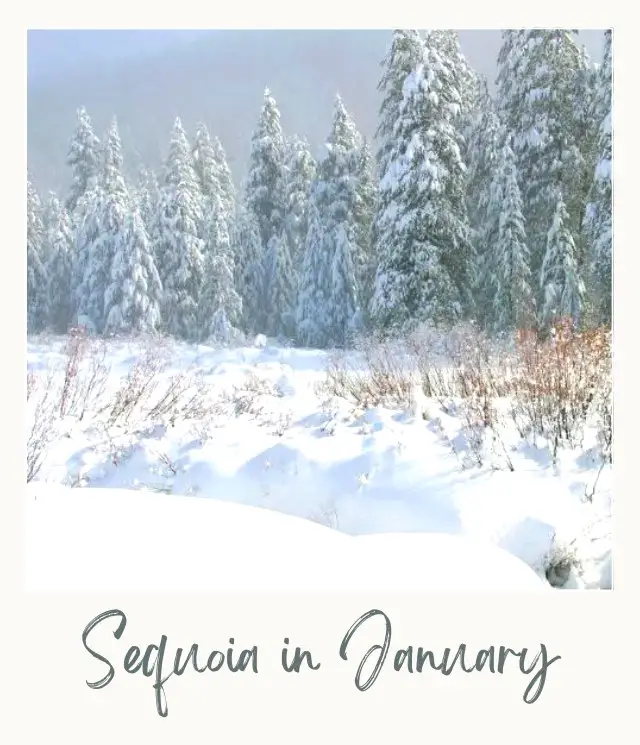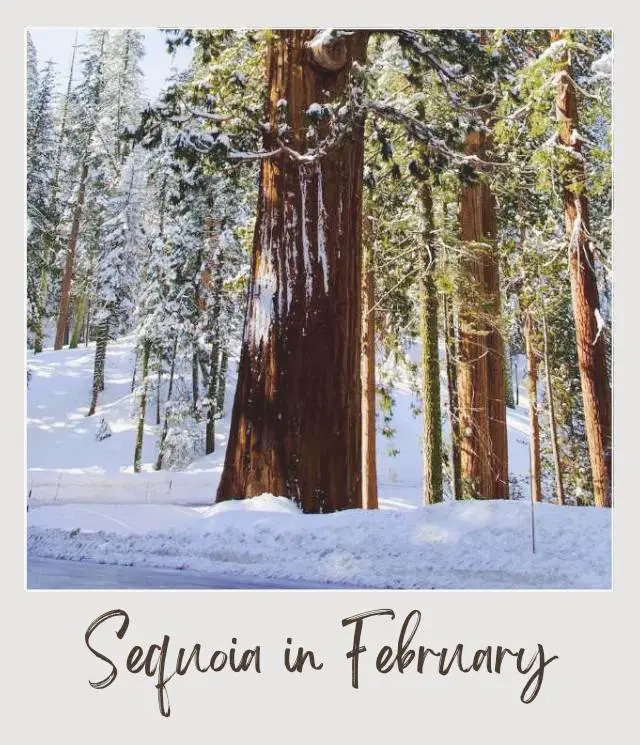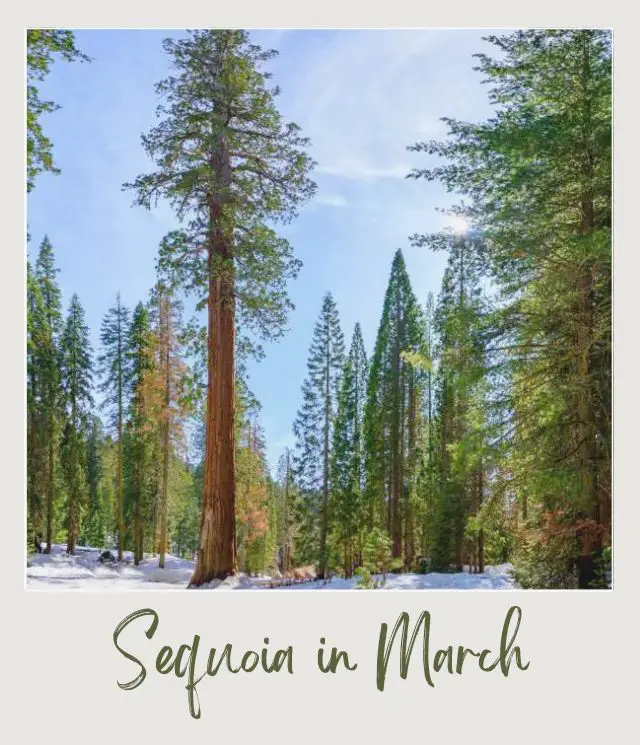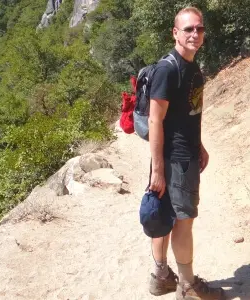If you want to see the huge trees and other natural features in this part of California, then you’ll need to decide when is the best month to visit Sequoia National Park for your trip.
I’m James and I’m a national park expert. In this guide, I’ll go into detail for each month about exactly what to expect, so you can plan a trip that suits your needs.
Covered here is a seasonal and monthly breakdown of the weather conditions you can expect, what things are open and activities available, so you can work out when to visit Sequoia National Park.
‼️ If you just want a quick snapshot about my thoughts on the best time to visit Sequoia National Park, check out my Best Time to Go To Sequoia National Park guide. ‼️
No time right now to discover what to expect each month when visiting Sequoia National Park? Pin It and save it for later:
⚠️ Something to keep in mind is that conditions at Sequoia can vary widely between different parts of the park even at the same time of year. The park lies in the Sierra Nevada mountains and the weather can vary with the altitude.
In the foothills you can expect hot summers and mild, rainy winters, while at higher elevations, temperatures are lower all year round. Plus there is lots of snow during winter in the mountains.
Sequoia National Park in Spring (April – May)
Spring in Sequoia National Park is between April and May. At that time of year, as with any season, you can expect a variety of temperature ranges depending on the elevation. The Giant Forest could be snowy, for example, while at lower levels wildflowers may be in bloom.
Here’s what to expect at Sequoia during the months of April and May.
Visiting Sequoia National Park in April
The weather in Sequoia National Park in April is variable according to the elevation.
In the foothills, the Sequoia National Park weather in April brings mild to warm average temperatures between 46°F (8°C) and 70°F (21°C). However it’s wise to expect the unexpected, as it could be as chilly as 29°F (-2°C) , or as hot as 92°F (33°C).
In the Sequoia Groves, expect cold lows of around 30°F (-1°C) with milder highs of about 51°F (11°C). Again, there can be much higher or lower temperatures, though, from 8°F (-13°C) to 77°F (25°C).
There can be about as much snow on the ground in April as in January – the average snowfall levels for the month are around 26 inches, with a depth of 25 inches or so. Snow is thus to be expected at higher levels, but is uncommon on lower ground.
So is April a good time to visit Sequoia National Park? You might see wildflowers in the foothills at Sequoia in April, while the mountains remain covered in a fairly thick blanket of snow. At all levels, though, the snow does generally begin to melt in April.
Pros
- Hot spring days aren’t unheard of
- It’s generally mild to warm at lower levels
- Wildflowers may be blooming in the foothills
Cons
- It can be cold in the Sequoia Groves
- Temperatures can be tricky to predict
- The mountains are still covered in snow
Visiting Sequoia National Park in May
By May, the weather in Sequoia National Park in May means that much of the snow will have melted away. Both snowfall levels and the depth are much lower, at around 5 inches each.
At the lower elevations, expect temperatures between 52°F (11°C) and 79°F (26°C) on average. The range could reach between 31°F (1°C) and 104°F (40°C), however, on rare occasions. Make sure you pack layers so you can adjust your clothing accordingly!
In the Giant Forest, Grant Grove and Lodgepole areas, average temperatures range between 36°F (2°C) and 58°F (14°C). But it could be as chilly as 13°F (-11°C), or as warm as 83°F (28°C).
So is May a good time to visit Sequoia National Park? Snowfall is minimal, and far less than in April. Sub-zero temperatures are now fairly unusual, even at higher elevations, though it tends to be colder earlier in May and warmer by the end of the month.
The park is less crowded now than in summer, and access is much better than during winter, early spring and late fall. This is also the spring wildflower season.
Pros
- Spring wildflower season
- Snowfall levels and depth are minimal
- Temperatures at lower elevations are warm
Cons
- There may still be some snow on the ground
- Temperatures may fluctuate quite a lot
- It’s still chilly at higher levels
Sequoia National Park in Summer (June – August)
Summer in Sequoia National Park falls between June and August. This three month season is the busiest time at the park, as access is at its most unrestricted. Expect mild to hot temperatures on average, though the range can be broad and varies by elevation.
Read on to find out what Sequoia in summer is really like.
Visiting Sequoia National Park in June
By June, you can expect dry weather at Sequoia National Park, with under half an inch of precipitation. A tiny amount of snow may remain on the ground in some locations, but it’s almost all melted away by now.
The foothills of the park see June temperatures between 61°F (16°C) and 89°F (32°C) on average. In some cases, though, they can range from 3°F (38°C) to 114°F (46°C).
In the mountains, expect the usual range to be between 7°F (44°C) and 68°F (20°C). In more extreme cases, though, you could see lows of 22°F (-6°C), or highs of 91°F (33°C).
June is a popular time to visit, as access is far better and temperatures much warmer than in winter, spring or summer. This means that the park can get very busy, but you will be less limited regarding where you can go.
Pros
- Under half an inch of rain
- Expect mild to hot weather
- Roads are open and it’s good for hiking
Cons
- The park can start to get crowded
- You’ll need to book accommodations in advance
- Below freezing temperatures are still sometimes possible in the mountains
Visiting Sequoia National Park in July
The weather in Sequoia National Park in July is the hottest and driest of the year. Midsummer brings crowds to the park, too, so expect it to be busy if you visit in July.
Again, the weather in Sequoia in July varies according to the elevation. At lower levels, temperatures tend to range between 68°F (20°C) and 97°F (36°C). When it’s unusually cold or hot, though, you could experience temperatures between 42°F (6°C) and 113°F (45°C).
In the highlands, you can expect a temperature range between 51°F (11°C) and 76°F (24°C). Historic temperatures, however, have been as low as 34°F (1°C) or as high as 92°F (33°C).
By July, temperatures lower than freezing are unheard of, even in the mountains. This is the busiest time for the park as all US schools are out, so don’t come now if you’d prefer peace. On the plus side, it’s generally warm to hot, with no rainfall whatsoever. Do note that fire bans may be in place during July.
Pros
- Little to no rain
- No below freezing temperatures
- Expect warm to hot weather at all levels
- Free park shuttle starts beginning of July
Cons
- Fire bans may be in place
- It can get too hot at lower elevations
- The park is at its busiest in midsummer
Visiting Sequoia National Park in August
The Sequoia National Park weather in August is similar to July, though temperatures are very slightly lower. It’s dry, with any rain at all being a rarity indeed.
Average minimums in the Sequoia foothills in August are between 67°F (20°C) and 96°F (36°C), though extremes as low as 46°F (8°C) and as high as 44°F (111°C) have been recorded. So it’s usually warm to hot both day and night.
In the highlands, cooler temperatures between 10°F (50°C) and 76°F (24°C) are the norm. The range could be in the region of 28°F (-2°C) to 94°F (34°C), however. So again, pack a mix of light and warmer layers so you’re prepared!
Summer is busy in Sequoia, and you can expect crowds accordingly. With dry and warm to hot weather throughout the area as the norm, this is a pleasant time to visit. It can get too hot at times in the lower elevations; however, and fire bans can be placed due to the risk of wildfires.
Pros
- No rainfall on average
- Good hiking conditions
- The weather tends to be mild to hot
- Free park shuttle runs
Cons
- It can be crowded
- Extreme highs can be uncomfortably hot
Sequoia National Park in Fall (September – October)
Fall in Sequoia is between September and October. Like spring, it’s a short season, before the long winter sets in. In fall, expect typical temperatures that sway between warm, mild and crisp. There’s also increasing precipitation, but considerably less than in winter.
As Sequoia trees are evergreen, fall colors aren’t really a thing as much as in other places, though some deciduous trees within the park may display red, orange or golden foliage.
Visiting Sequoia National Park in September
The weather at Sequoia National Park in September is starting to cool down a little, following the summer highs. On average, it’s only slightly cooler than in June, and similarly you can also expect under an inch of rain.
Average temperatures in September range from 52°F (11°C) to 91°F (33°C) in the foothills. At these lower elevations, lows of about 37°F (3°C) and highs of around 112°F (44°C) have previously been recorded. So it can still be cold here – or very hot indeed!
In the Sequoia highlands, expect averages of around 45°F (7°C) to 71°F (22°C). In the past, extreme lows of 23°F (-5°C) and highs of 90°F (32°C) have occurred here historically.
With comparable weather to July, the advantage of a September visit is that the park will be more peaceful. The temperatures don’t start to cool down significantly until October, so conditions now can be very pleasant. Park roads and Crystal Cave should remain open this month, too. In all, September is a great time to visit Sequoia.
Pros
- Only half an inch of rain
- The park is more peaceful than in summer
- Temperatures are still comparable to June
Cons
- It’s starting to cool down by the end of the month
- It can still get too hot in the foothills
- There may be a little rain
- Park shuttle stops mid-September
Visiting Sequoia National Park in October
The weather in Sequoia National Park in October reflects the fact that summer is well and truly over – but winter has not yet set in. Rain and snowfall levels are starting to creep up. Averages for October are between 1.5 and 2 inches of rain or snow, though not much, if any, tends to settle as yet.
Average low temperatures for October in the lowlands are around 43°F (6°C), with the highs of about 80°F (27°C) expected. More unusually, temperatures can range between lows of 26°F (-3°C) and highs of 82°F (28°C). This is similar to May.
In the highlands, lower temperatures are to be expected, as usual. These typically range from 38°F (3°C) to 61°F (16°C), though they can reach between 11°F (-12°C) and 82°F (28°C). So it can be warm during the day, and very chilly at night – or anywhere in-between.
Is October a good time to visit Sequoia National Park? By the end of the month, road closures may occur as winter takes hold. But earlier in the month, crisp days and fewer visitors can make this a good time to head here. It really depends on your priorities.
Pros
- Pleasant temperatures for the main part
- Less rainfall than in winter
- The park is generally peaceful
Cons
- Roads may close by the end of the month
- The highlands can be chilly overnight
- It’s generally mild rather than warm
Visiting Sequoia National Park in Winter (November – March)
If you’re thinking of heading to Sequoia in winter, then you can certainly expect to have more of the park to yourself. For the answers to questions such as when does it snow in Sequoia National Park, read on for the month-by-month breakdown. Due to unfavorable road conditions, do note that Cedar Grove closes during winter in Sequoia National Park.
For snow sports, winter is the time to head to the mountains of Sequoia.
Visiting Sequoia National Park in November
The Sequoia National Park weather in November sees colder temperatures setting in, as well as more rain or snow than in early fall. Again, the weather in Sequoia in November varies according to how low or high up you are.
The Sequoia National Park November weather results in averages, in the lower elevations, of around 37°F (3°C) to about 67°F (19°C). In more extreme cases, these may fall as low as 18°F (-8°C), or reach as high as 82°F (28°C). So even in the foothills, it can start to get chilly during the day, and colder still at night. A few inches of snow may settle during this month.
In the mountains of Sequoia, the average range is about 31°F (-1°C) to 50°F (10°C). More unusual lows and highs may reach between -20°F (-4°C) and 73°F (23°C), however. So again come with clothing that you can adjust as the day wears on!
Is November a good time to visit Sequoia National Park? If you don’t mind the increasingly cold weather in Sequoia National Park in November, then this can be a tranquil time to visit. Just keep in mind that access might be limited, and be prepared for the cold. Particularly at high elevations and overnight.
Pros
- There are few visitors in winter
- It’s warmer and drier than December to March
Cons
- Temperatures are really starting to drop
- The weather is getting wetter
- Expect road closures
Visiting Sequoia National Park in December
Is Sequoia National Park open in December, and if so is this a good time to be there?
The weather in Sequoia National Park in December brings snow to the mountains, so this is the beginning of the winter sports season. You can go sledding, snowshoeing or skiing now, as there will be around 11 inches of snow on the ground. There’s less snowfall than during the following three months, however.
In the milder foothills, expect temperatures of between 36°F (2°C) and 58°F (14°C) on average. In this area extremes aren’t uncommon, though, so you could see the mercury dip as low as 18°F (-8°C) or hit highs of around 82°F (28°C). Again, this is the time to be packing lots of layers.
On higher ground, temperatures between 27°F (-3°C) and 44°F (7°C) are typical in December. Here it could also reach a low of -20°F (-4°C) or a high of 73°F (23°C), though this is more unusual.
Due to restricted access and extreme cold, winter tends to be a time for snow sports at Sequoia rather than exploring. Though of course activities like snowshoeing can allow you to combine both. Later in the month is best for winter sports, and you can expect even more snow in January, February and March.
Pros
- It’s the start of winter sports season
- Less precipitation than in the following months
Cons
- Roads remain closed
- Very cold temperatures are usual
- Not as much snow on the ground as later in winter
Visiting Sequoia National Park in January
If you want to experience Sequoia National Park in the snow, then January sees around 24 inches of snow on the ground. Throughout the month, about 37 inches of snow will fall, which is a little less than February and March, but enough to mean that the winter sports season is well underway.
Average lowlands temperatures at Sequoia in January range from 36°F (2°C) to 57°F (14°C). There can be big variations, though, and if this is the case then the mercury could hit anywhere between 20°F (-7°C) and 85°F (29°C).
Among the mountains of Sequoia in January, expect typical lows of around 24°F (-4°C), with highs of about 42°F (6°C). Extremes may be in the range of -6°F (-21°C) to 68°F (20°C). So though it can be mild on some days, very chilly day and night-time weather is more common.
In January, most people visit Sequoia for winter activities like skiing, sledding and snowshoeing.
Pros
- More snow on the ground than in December
- Winter sports season is well underway
Cons
- Expect closed roads
- It’s cold during the day and night
- Access is very restricted by midwinter
Visiting Sequoia National Park in February
The Sequoia National Park weather in February continues in the same vein, so winter sports are still what most people flock to the park for. This is the second-wettest month, with slightly less snow than in March. Temperatures are pretty similar to those of December.
At Sequoia in December, you can expect the usual lowland temperatures to range between 39°F (4°C) and 61°F (16°C). When it’s considerably colder or warmer, temperatures as low as 22°F (-6°C) or as high as 85°F (29°C) have been recorded.
The mountains typically experience temperatures of between 25°F (-4°C) and 44°F (7°C), though they sometimes range from -4°F (-21°C) to 70°F (21°C). This means it can feel mild at times during the day, but is always very cold at night.
The snow sports season continues at Sequoia in February, and roads remain closed.
Pros
- Snow sports season
- The park looks very pretty
Cons
- The second-wettest month (mostly in the form of snow)
- Thick snow restricts access
- Park roads are still closed
Visiting Sequoia National Park in March
Head to Sequoia National Park in March and you’ll find that the weather is more wintry than spring-like. So is March a good time to visit Sequoia National Park? Temperature-wise, it’s somewhere between December and November, so not as cold as midwinter.
The Sequoia National Park weather in March is the wettest of the year, however. 40 inches of snowfall are average, with around 39 inches on the ground. This restricts access and means that park roads remain closed. It also creates perfect winter sports conditions, though you might see some wildflowers by the end of the month at lower elevations.
In terms of temperature, the weather in Sequoia National Park in March in the lowlands sees average lows of 41°F (5°C), with highs of 64°F (18°C). When extremes fall outside of this range, they may hit between 26°F (-3°C) and 85°F (29°C). So it can get warm at times.
Up in the highlands, expect averages between 26°F (-3°C) and 46°F (8°C). Though at times it can get as cold as 0°F (-18°C), or as warm as 76°F (24°C).
Pros
- March is the wettest month (mostly snow)
- There may be wildflowers in late March at lower elevations
- It’s getting slightly warmer by the end of the month
Cons
- It’s still wintry in terms of temperature
- Overnight lows can be extremely cold
- Roads remain closed and/or unplowed
Travel Insurance for Sequoia National Park
No matter when is the best time to see Sequoia National Park, you should definitely get travel insurance. This can protect you not only against medical and emergency repatriation, but can also cover things like trip cancellation, loss and/ or theft of property, etc.
➡️ A great insurance option is Travelex. It has coverage for all you’ll need. You can compare Travel Insurance plans here or get a quote right now:

Enjoy Sequoia National Park!
More Planning Resources for Sequoia National Park
⭐ Sequoia National Park Guide
⭐ Planning A Trip to Sequoia National Park: 7 Big Mistakes to Avoid
⭐ The Congress Trail Guide
⭐ How to Get to Sequoia National Park
⭐ All The Airports Near Sequoia National Park
⭐ The Closest Airport To Sequoia National Park
⭐ The Best Time To Visit Sequoia National Park
⭐ 10 Tips For Visiting Sequoia National Park
⭐ 10 Fun Facts About Sequoia National Park
⭐ Best Vacation Rentals Near Sequoia National Park
What do you think is the best time of year to visit Sequoia National Park? Join my private Facebook group National Parks Collectors and comment and let me know (you can also pick up extra planning tips, share your photos and stories with other national park lovers and more).
If you liked this article about the best time to go to Sequoia National Park, Pin It to your Sequoia National Park board!
James Ian is a national park, camping and hiking expert.
He has dedicated his life to travel, visiting more than 80 countries, all 7 continents and most of the national parks in the United States. With over 35 years experience in the travel industry, James has worked on cruise ships, at resorts and hotels, and as a travel planner who’s helped hundreds of people plan successful trips to US national parks.
Based on his experience visiting our national parks multiple times, in-depth research and expertise as a travel planner, James has published detailed itineraries for many of the major national parks in the US. These itineraries, as well as in-depth park guides, and other resources will help you have your own incredible trip to US national parks without stress and hassle.
As a national park expert, James has contributed to many publications, including USA Today, Newsweek, Time Business News, Savoteur, Best Trip, and Wired.
Read more…
I’m a member of the Amazon Services LLC Associates Program. As an Amazon Associate I earn from qualifying purchases.



